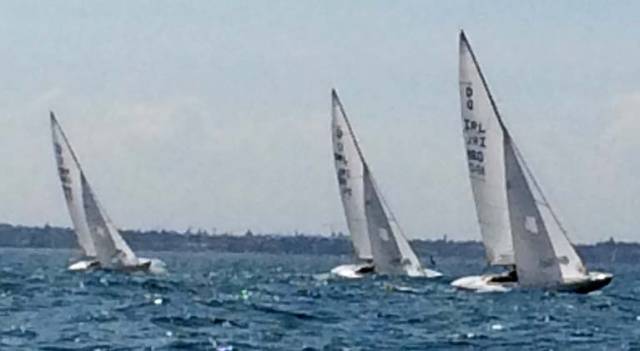Kinsale Yacht Club’s “Little Fella” lead the Dragon Fleet after day 1 with two races of the Dragon East Coast Championships completed at the Royal St. George Yacht Club.
The Cameron Good crew lead the 11-boat fleet with a score of three pts with a first and second in 12 to 15 knots breeze from 300 degrees on Dublin Bay.
Martin Byrne’s Jaguar Sailing Team are tied in second overall with top British contender Mike Budd after some tense racing which saw many place changes during both races today.
"The Cameron Good crew lead the 11-boat fleet with a score of three points"
However, the heros of the day were the ‘Serofino" team from Kinsale, helmed by Brian Goggin, who stole a first place in race two with some masterly tactics when they recognised a significant advantage by staying left on the last two beats to sail from 4th to 1st by the finish line in Race 2.
'Little Fella', 'Jaguar Sailing Team' & Mike Budd’s ‘ Harry’ were leading each race today at different stages to provide some close racing in champagne sailing conditions. In the meantime, National Champions, Phantom, remain closely in contention with two fifths today.
Its just two races into a six race series which continues on Saturday and Sunday sponsored by A stitch in Time Embroiderers.
In a race course incident, a crew member fell overboard from one of the Dragons and the next boat behind picked up the crewman. The result then was that one boat had four crew members aboard. A RIB in the vicinity came alongside, collected the extra crewman and returned him to his boat.
In a protest that followed, the boat which lost the crewman retired, and the boat with four crewmen was upgraded by one finishing place.































































